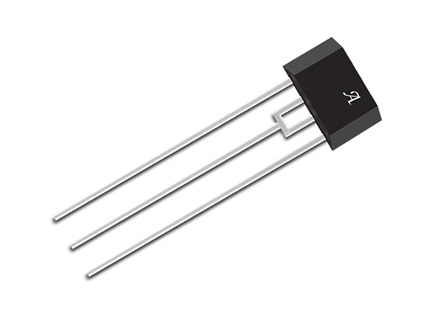Allegro MicroSystems, Inc. Introduces a New User-Programmable Linear Hall-Effect Sensor IC

Low Jitter with High Sensing Accuracy
Worcester, MA – Allegro MicroSystems, Inc. introduces a new user-programmable linear Hall-effect sensor IC with pulse width modulated output. The A1356 complements Allegro’s existing line of linear devices with PWM outputs by offering a device with significantly higher carrier frequency of 2 kHz. This new device targets gear detection, fork, clutch and neutral positions within the automotive market in addition to key applications within the industrial market.
The A1356 device is a high precision, user programmable, Hall-effect linear sensor with a pulse width modulated (PWM), open collector output. The duty cycle (DC) of the PWM output signal (freq: 2 kHz) is proportional to an applied magnetic field. The A1356 device converts an analog signal from its internal Hall sensor element to a digitally encoded PWM output signal. The coupled noise immunity of the digitally encoded PWM output is far superior to the noise immunity of an analog output signal, particularly when the signal needs to travel over long wires within the system.
The BiCMOS, monolithic circuit inside of the A1356 integrates a Hall element, precision temperature-compensating circuitry to reduce the intrinsic sensitivity and offset drift of the Hall element, a small-signal high-gain amplifier, proprietary dynamic offset cancellation circuits, and PWM conversion circuitry. The dynamic offset cancellation circuits reduce the residual offset voltage of the Hall element, which is normally caused by device over molding, temperature dependencies, and thermal stress. The high-frequency offset cancellation (chopping) clock allows for a greater sampling rate, which increases the accuracy of the output signal and results in faster signal processing capability.
The design and manufacturing flexibility of the A1356 is realized through user programmable: gain, quiescent duty cycle, and carrier frequency. The device can be set up in a magnetic circuit and programmed with a train of serial pulses. Once the appropriate parameters have been selected, the codes can be locked for one-time programming. In this manner, manufacturing tolerances can be reduced and the assembly process can be simplified.
The A1356 sensor is provided in a lead (Pb) free, 3-pin, single inline package (KB suffix), with 100% matte tin leadframe plating.
